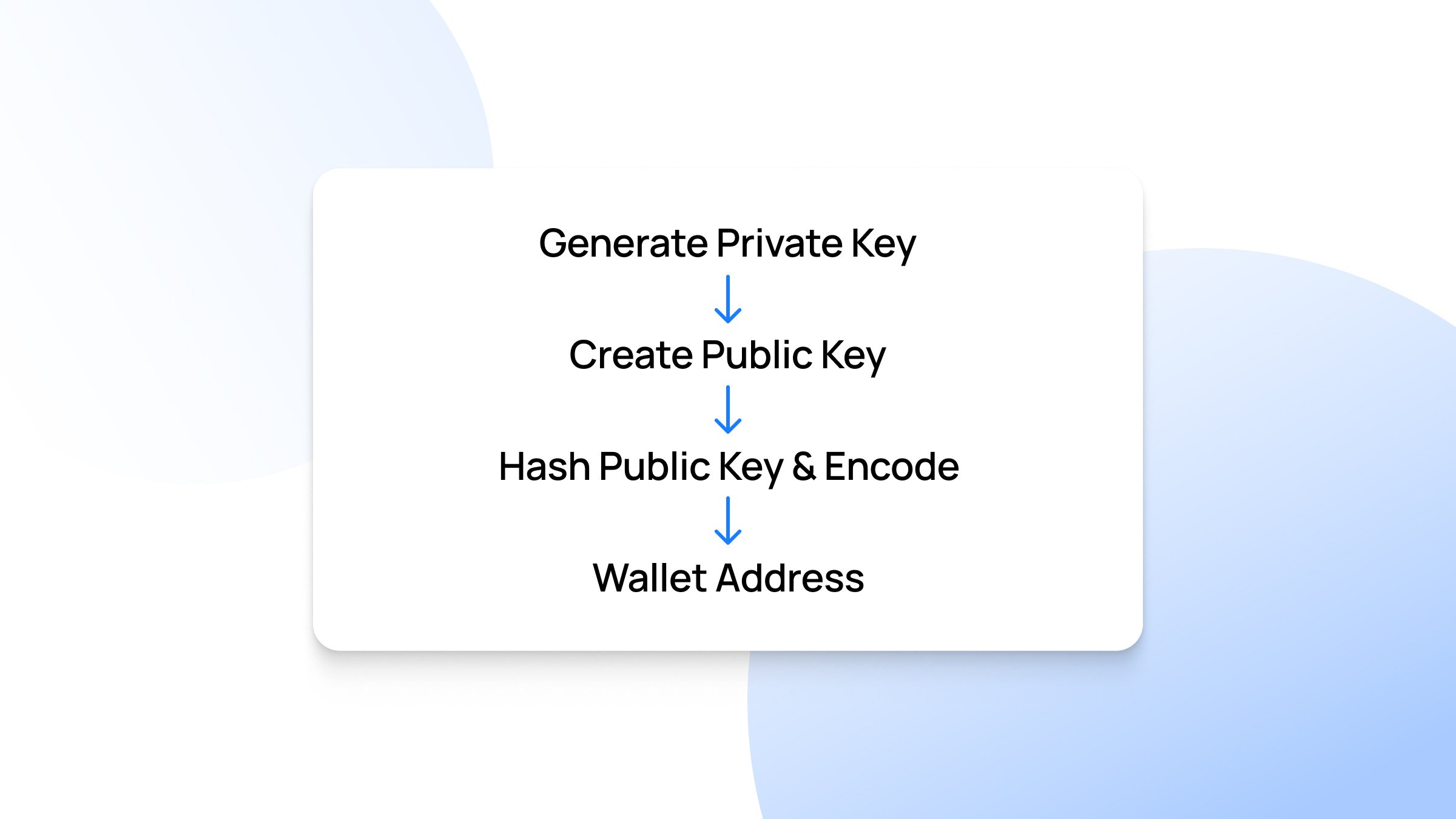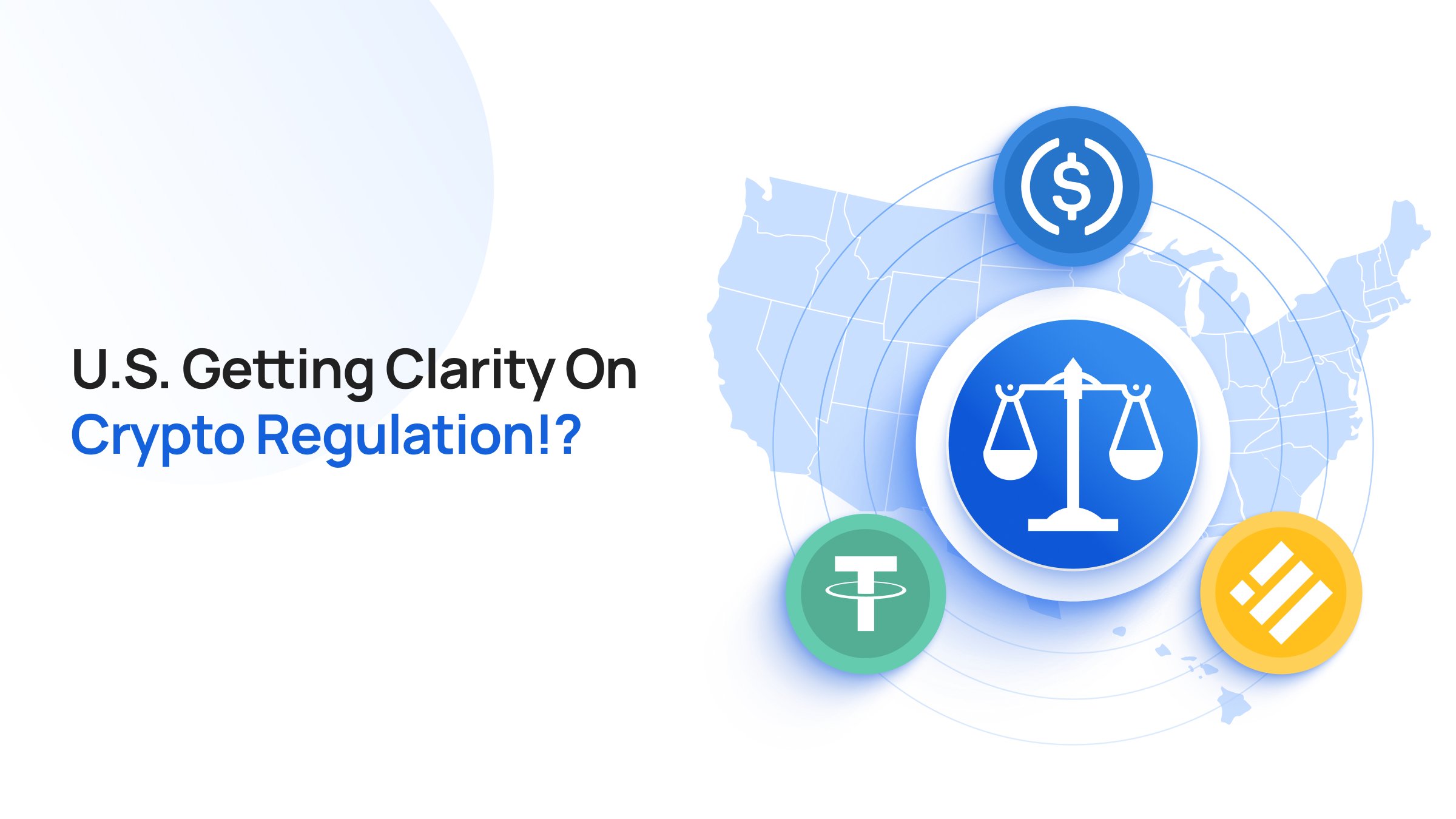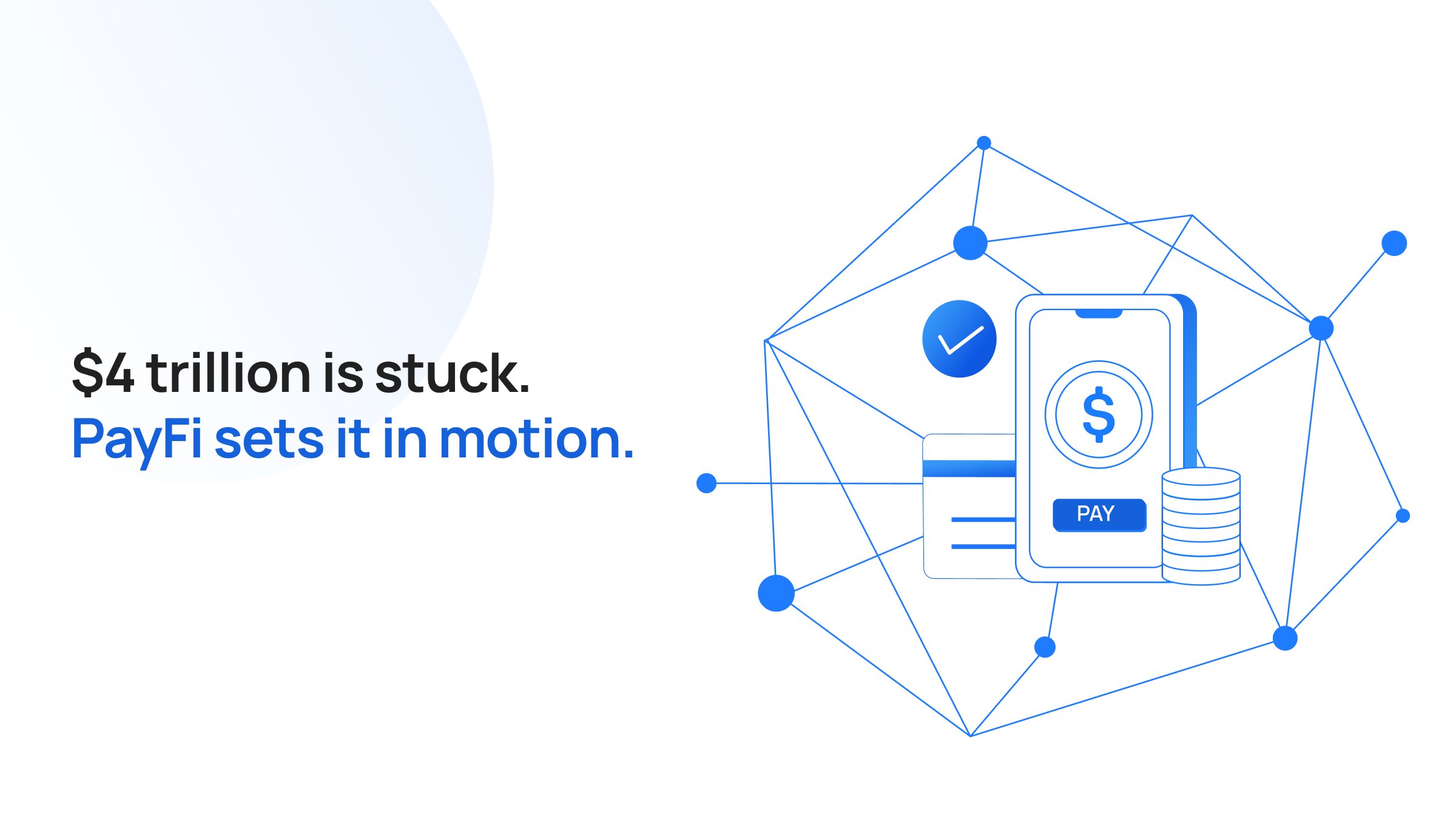Decentralized finance has many similarities to traditional finance. Both share a similar value exchange medium, i.e., a “currency”, and both share a similar currency storage mechanism, i.e., a “wallet”.
Whether you choose to invest in crypto on a centralized exchange or through a decentralized exchange, a common denominator is a wallet. The only difference between a custodial wallet and a non-custodial wallet is that, in the former, you do not hold the private keys (a sort of a password to the wallet).
And, in all likelihood, you’d come across Transak as a way to purchase cryptocurrency and the interface asks you to enter your “wallet address”.
So, what is a wallet address, why does it exist, and how to find your wallet address so you can use it as intended? This article explains it all.
What Is A Wallet Address?
A crypto wallet address is an identifier of where your crypto is held on the blockchain. The wallet address, in its bare bones, is a series of 1’s and 0’s, but is condensed and represented in an alphanumeric format.
The exact format can vary depending on the blockchain. For instance, Bitcoin addresses are usually between 26-35 characters, starting with a 1, 3, or bc1, while Ethereum addresses are 42 characters long, starting with “0x”.
Examples Of Wallet Addresses
Bitcoin: 1A1zP1eP5QGefi2DMPTfTL5SLmv7DivfNa
Ethereum: 0x742d35Cc6634C0532925a3b844Bc454e4438f44e
Here’s an analogy.
You can think of a crypto wallet as a bank account, and the wallet address as your bank account number. Your bank account number basically points to the account in which your funds are held in the bank and anyone can send you money if they have your bank account number.
There’s also another ‘special’ kind of wallet address called a “burn address”. Cryptocurrencies can be sent to these addresses to (figuratively) burn them by taking them out of circulation. Learn more about token burning here.
What Happens When You Send Crypto To A Wrong Wallet Address?
The most common answer users get to their question “what happens when I send crypto to a wrong wallet address” is that they will lose their funds forever. But that may be wrong depending on the context.
When you send crypto to an incorrect wallet address, the outcome depends on whether the address exists or not.
Case 1: The Wrong Wallet Address Exists
If the incorrect address you entered belongs to an existing wallet, the cryptocurrency will be transferred to that wallet. Unfortunately, since crypto transactions are irreversible, there's no way to undo the transaction or retrieve the funds unless the recipient is willing to send them back.
Here's what you can do in this situation:
- Contact the Recipient: If you know who owns the wallet (e.g., it's a friend or a business), contact them immediately and explain the situation. They may be willing to return the funds to you.
- Check Exchange Policies: If the recipient’s wallet address is an exchange, contact their customer support and explain the situation. Some exchanges might be able to help if the funds haven't been moved yet.
Case 2: The Wrong Wallet Address Does Not Exist
If the incorrect address doesn't belong to any existing wallet, the outcome depends on the specific cryptocurrency and its blockchain rules:
- Some Cryptocurrencies: In some cases, the transaction might fail, and the funds might be returned to your wallet automatically.
- Other Cryptocurrencies: In other cases, the transaction might go through, but the funds might become inaccessible. This is because the private key associated with the non-existent address doesn't exist, and without the private key, it's impossible to access the funds.
Where Do Wallet Addresses Come From?
Asymmetric cryptography, also known as public-key cryptography, is the foundation of cryptocurrency wallet addresses. This cryptographic system uses key pairs: public and private keys. These keys are mathematically related.

The relationship between these keys ensures that messages encrypted with a public key can only be decrypted with the corresponding private key, and vice versa.
- Private Key: This key is kept secret by the wallet owner. It is used to sign transactions, proving ownership of the funds being transferred. Think of it as a secret signature that only you possess.
- Public Key: This key can be freely shared with anyone. It is used to verify the authenticity of transactions signed with the corresponding private key. Think of it as your public wallet address where people can send you crypto.
This public key is what becomes your wallet address.
.jpg)
Going back to your “bank account number” analogy, you can share your public key with anyone and they can send funds to your crypto wallet. But your private key should remain only with you — this is akin to your bank account password.
Why Does Asymmetric Cryptography Work For Wallet Addresses?
The magic of asymmetric cryptography lies in the fact that it's computationally infeasible to derive the private key from the public key, although they are mathematically linked.
This ensures that even if someone knows your public key (your wallet address), they cannot access your funds without the private key.
For the curious few reading this and want to go deeper, let’s take a quick look at the how the wallet address is derived from the private key:
- SHA-256 and RIPEMD-160 Hashing:
- SHA-256: The public key is first hashed using the SHA-256 algorithm, producing a 256-bit hash.
- RIPEMD-160: The SHA-256 hash is then hashed using the RIPEMD-160 algorithm, resulting in a 160-bit hash. This hashed value is called the public key hash (PKH).
- Version Byte: A version byte is added to the beginning of the public key hash to indicate the network (e.g., ‘0x00’ for Bitcoin mainnet). This helps identify the type of address and prevents cross-network issues.
- Checksum: To prevent errors, a checksum is added. The checksum is created by taking the first four bytes of a double SHA-256 hash of the extended public key hash (the version byte + public key hash).
- Base58Check Encoding: The extended public key hash (public key hash + version byte + checksum) is encoded using Base58Check. This encoding avoids visually similar characters, reducing errors in manual transcription. The end result is the wallet address.
Going deeper into the weeds of wallet addresses and key generation, you will come across concepts like Elliptic Curve Cryptography (ECC) and the secp256k1 curve. These, however, are beyond the scope of this article.
Of course, you don’t have to learn all this to start using a wallet address. You can follow this beginners’ guide to setting up a crypto wallet.
Crypto Wallet Addresses Come In Many Different Forms
We mentioned earlier that crypto wallet addresses are merely strings of 1’s and 0’s (because that’s how computers store and process information). These strings of binary digits are passed through transformational functions to be further simplified for security and integrity purposes, ensuring that the address is valid and can be used to send and receive cryptocurrency.
Therefore, they can be transformed into other forms like QR codes. This can also act as a way for you to choose your crypto wallet depending on your feature preference.
Here’s a look at a few popular forms of wallet addresses.
QR Codes
This is a very common representation of wallet addresses. A QR code is a two-dimensional barcode that can store the alphanumeric address.
Users can easily scan the QR code with their smartphone's camera to automatically fill in the address in their wallet app, eliminating the need for manual typing and reducing the risk of errors.
NFC Tags
Near Field Communication (NFC) tags are small chips that can store wallet addresses and other data.
Users can simply tap their NFC-enabled smartphone on the tag to transfer the address to their wallet app.
Payment Links
These are URLs that contain a wallet address and sometimes additional information like the payment amount or a description.
Users can click on the link to open their wallet app and automatically fill in the payment details.
Human-Readable Formats
Some cryptocurrencies offer the option to represent wallet addresses in a more human-readable format, such as using a combination of words.
This can make it easier to share addresses verbally or through channels with limited character support.
Wallet Address Compatibility Across Different Cryptocurrencies
Surprisingly, you can sometimes use the same cryptocurrency wallet address for different cryptocurrencies. This is possible when the cryptocurrencies share the same underlying token standard.
Let's dive into how this works.
For instance, ERC-20 is the most common token standard for cryptocurrencies built on the Ethereum blockchain. Tokens like Chainlink (LINK), Basic Attention Token (BAT), and many others follow this standard.
If two cryptocurrencies follow the same token standard, they can often share the same wallet address. This is because the underlying technology and the way addresses are generated are compatible.
You can use the same Ethereum wallet address to hold both Ether (ETH) and any ERC-20 token.
How It Works
When you send an ERC-20 token to an Ethereum address, the transaction is recorded on the Ethereum blockchain. The address itself doesn't change, but the blockchain tracks the balance of each token associated with that address.
Think of it like this: your wallet address is like an apartment building, and each token is like a different apartment within that building. You can have multiple apartments (tokens) within the same building (wallet address).
Important Considerations
- Different Blockchains: Wallet addresses are not compatible across different blockchains. For example, you cannot send a TRC-20 token to an Ethereum address.
- Wallet Compatibility: Make sure your wallet software supports the specific token standard you want to use. Most popular crypto wallets support multiple standards.
- Double-Check: Always double-check the address and the network you're sending to before initiating a transaction.
Examples Of Wallet Addresses Of Popular Blockchains
Bitcoin (BTC) Addresses
In the case of BTC, there are three different types of Bitcoin wallet addresses.
1. P2PKH (Pay-to-Public-Key-Hash)
- Format: Typically starts with a ‘1’.
- Example: 1A1zP1eP5QGefi2DMPTfTL5SLmv7DivfNa.
- Description: The traditional Bitcoin address format. It uses a public key hash to generate the address.
- Use Case: Commonly used for most Bitcoin transactions.
2. P2SH (Pay-to-Script-Hash)
- Format: Starts with a ‘3’.
- Example: 3J98t1WpEZ73CNmQviecrnyiWrnqRhWNLy.
- Description: Allows more complex scripts such as multisig (multiple signatures required for a transaction).
- Use Case: Used for multisig crypto wallets and other advanced scripting functions.
3. Bech32 (SegWit Addresses)
- Format: Starts with ‘bc1’.
- Example: bc1qar0srrr7xfkvy5l643lydnw9re59gtzzwf3q5.
- Description: More efficient address format introduced with Segregated Witness (SegWit). Reduces transaction fees and improves transaction speed.
- Use Case: Increasingly adopted for Bitcoin transactions due to its efficiency.
Ethereum (ETH) Address
- Format: Starts with ‘0x’ followed by 40 hexadecimal characters.
- Example: 0x742d35Cc6634C0532925a3b844Bc454e4438f44e.
- Description: Derived from public key using Keccak-256 hash algorithm. The address represents the location where the balance of Ether and tokens is stored.
- Use Case: Used for holding Ether (ETH) and interacting with Ethereum-based smart contracts and tokens.
Litecoin (LTC) Addresses
- Format: Can start with ‘L’, ‘M’, or ‘ltc1’. Example: LZ3R1kaG7Wybz7YjDEkgmNGASsqnmLy9ht.
- Description: Similar to Bitcoin addresses but on the Litecoin network, with some differences in address prefixes and hashing algorithms.
- Use Case: Used for transactions on the Litecoin network.
Ripple (XRP) Addresses
- Format: Usually starts with ‘r’ followed by a string of alphanumeric characters. Example: rHb9CJAWyB4rj91VRWn96DkukG4bwdtyTh.
- Description: Includes a destination tag to specify the receiving account.
- Use Case: Required for transactions on the Ripple network to distinguish between different users within a single address.
Cardano (ADA) Addresses
- Format: Long string of alphanumeric characters starting with ‘addr1’.
- Example: addr1qx2fxv2m5j9z7fx4q3n3h3g9hswjqvj3kr5m9gf6zgztgp3cqs7zzg5p5jqql9g5m.
- Description: Cardano addresses can be used for receiving ADA and interacting with the Cardano blockchain.
- Use Case: Holding and transacting ADA, participating in Cardano’s staking mechanism.
Polkadot (DOT) Addresses
- Format: Starts with ‘1’ or ‘5’.
- Example: 1zugcacXq5na1ptmc5ZAGYzyHG5SkX25G1hsFsSBAVAJQAd.
- Description: Polkadot addresses are used within the Polkadot network to manage DOT and participate in governance and staking.
- Use Case: Managing DOT tokens, staking, and participating in Polkadot’s governance.
Next-Generation Wallet Addresses: Human-Readable Addresses
By now, you know that wallet addresses, in their conventional form, are a mouthful. Most people do not even read the entire wallet address, much less remember it or enter them manually when sending or receiving crypto.
Understandably, most people find it difficult to memorize long hexadecimal digits. And relying on memory, even if they tried, is not advisable as a single-digit error can cause complete loss of funds!
These issues have led to new challenges like address poisoning attacks and poor usability.
Next-generation wallet addresses, often referred to as "human-readable addresses," are designed to improve the user experience and make interacting with cryptocurrencies more intuitive. These addresses aim to replace the long, complex strings of alphanumeric characters with more memorable and user-friendly formats.
Here are two prominent examples:
- Ethereum Name Service (ENS): ENS allows you to register a human-readable domain name (e.g., yourname.eth) that maps to your Ethereum wallet address. This simplifies sending and receiving crypto on the Ethereum blockchain, as you only need to remember the domain name instead of the full address. ENS also supports other blockchain integrations and decentralized applications (dApps).
- Unstoppable Domains: Unstoppable Domains offers domain names ending in extensions like .crypto, .wallet, or .x. These domains can be used to replace cryptocurrency wallet addresses across various blockchains, including Bitcoin, Ethereum, and many others. Unstoppable Domains also provides additional features like decentralized websites and identity management.
Benefits of Human-Readable Addresses
- Easier to Remember: Domain names are far more memorable than long, complex wallet addresses, making it easier to share them with others and reducing the risk of errors when entering them.
- Improved User Experience: They create a more intuitive and user-friendly experience, especially for newcomers to the crypto space.
- Enhanced Branding: Businesses and individuals can use custom domain names to build their brand and create a more professional presence in the crypto world.
- Decentralized: Both ENS and Unstoppable Domains are decentralized, meaning they are not controlled by a single entity and offer greater censorship resistance and security.
FAQs On Wallet Addresses
Can I have multiple wallet addresses?
Yes, you can have multiple wallet addresses for different cryptocurrencies or for privacy reasons. Each address is linked to the same wallet, but they provide a layer of anonymity.
Are wallet addresses case-sensitive?
Some blockchain wallet addresses may be case sensitive (not all). It is always a good practice to ensure you enter the wallet address exactly as you see it.
Bitcoin addresses in Base58Check are case-sensitive. For example, 1A1zP1eP5QGefi2DMPTfTL5SLmv7DivfNa is different from 1a1zP1eP5QGefi2DMPTfTL5SLmv7DivfNa.
Ethereum addresses themselves are not case-sensitive, meaning that the network treats the addresses 0x742d35Cc6634C0532925a3b844Bc454e4438f44e and 0X742D35CC6634C0532925A3B844BC454E4438F44E as identical. Therefore, when sending transactions or performing operations, you can use either uppercase or lowercase characters without affecting the outcome.
How do I find my wallet address?
To find your wallet address, open your cryptocurrency wallet and navigate to the section labeled “Receive” or “Deposit.” Your wallet address will be displayed there. It is typically a long string of alphanumeric characters and may also be presented as a QR code.
Can I Change My Wallet Address?
You cannot change an existing wallet address, but you can generate new addresses within your wallet. Most crypto wallets allow you to create multiple addresses, which you can use for different transactions or purposes.
You can share your wallet address securely by copying and pasting it directly from your wallet or using a QR code. Avoid typing the address manually to prevent errors, and double-check the copied address before sharing it.






